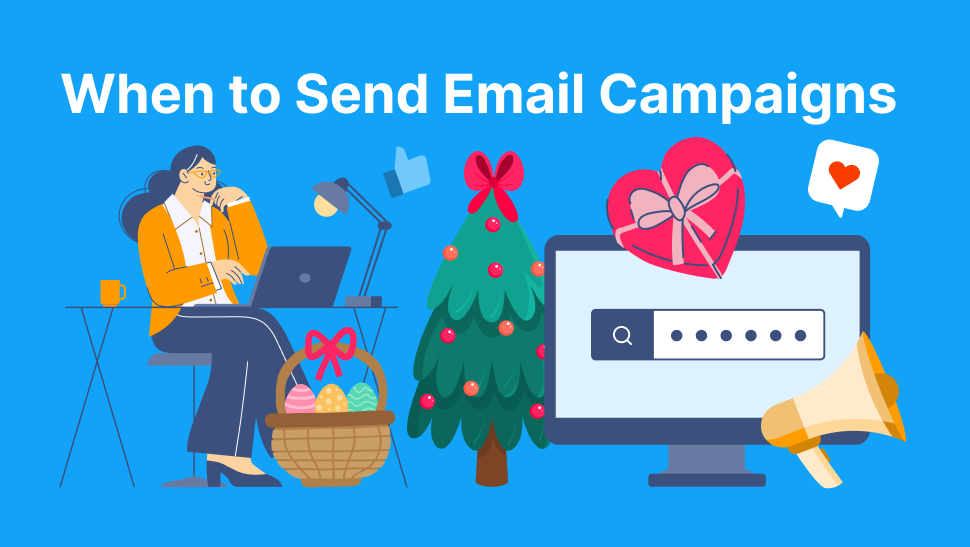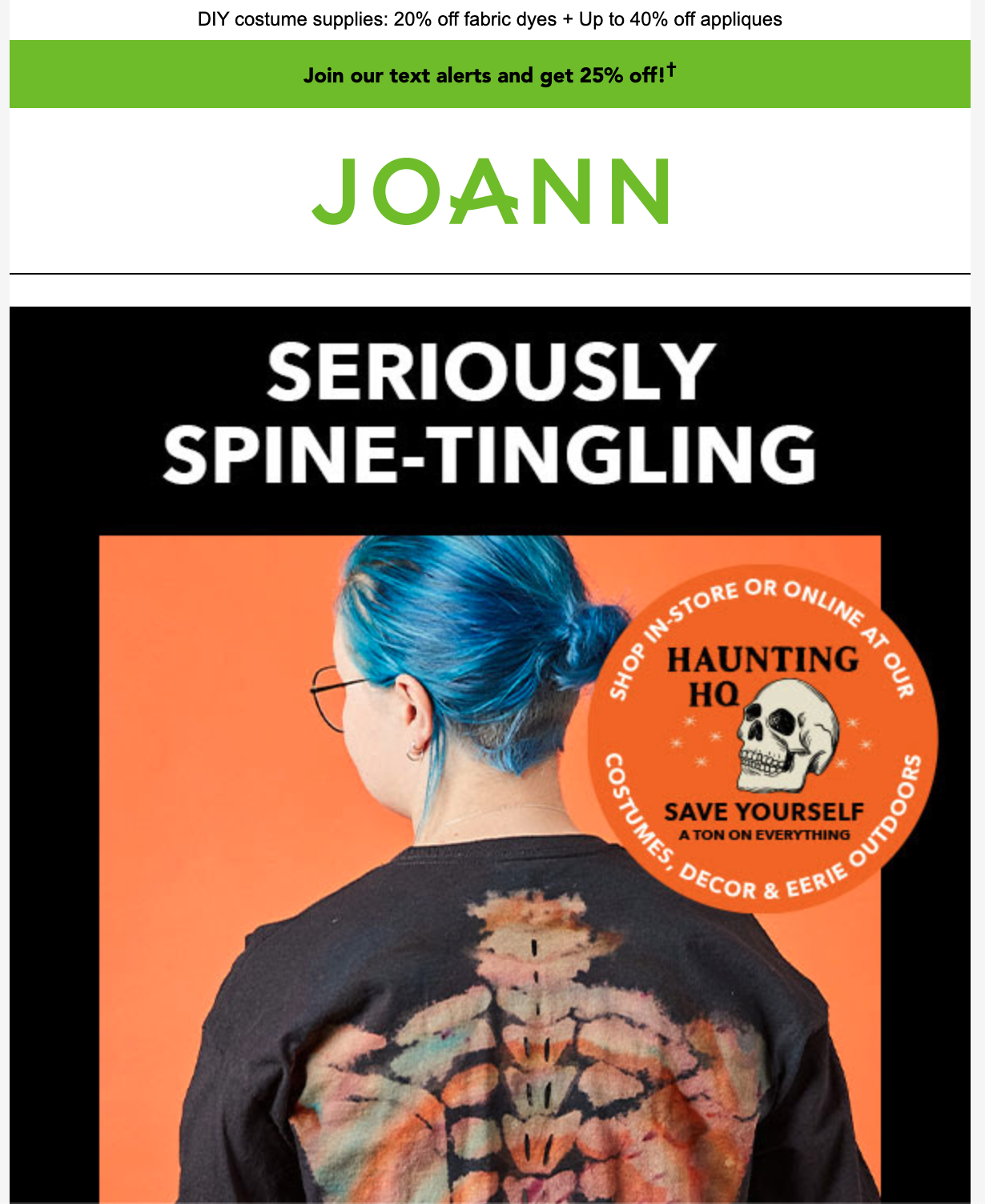Sending emails at the right times can significantly impact open rates, click-through rates, and ultimately, the success of your promotions. In this article, we'll explore the best times of the year to send promotional email campaigns and provide insights on tailoring your email marketing strategy for seasonal trends. Ready to unlock your email campaign success?
Table of Contents
- The Year-Round Importance of Email Marketing
- Monthly and Weekly Trends
- The Best Times of Year for Promotional Email Campaigns
- Beyond Seasonal Opportunities
- Conclusion

The Year-Round Importance of Email Marketing
Email marketing consistently delivers a high return on investment (ROI) for businesses across various industries. According to a study by the Data & Marketing Association, email marketing has an average ROI of $42 for every $1 spent. This compelling ROI is one reason why businesses continue to invest in email marketing campaigns throughout the year. Let's take a look at how correct campaign timing will make email marketing investment worth it.
Monthly and Weekly Trends
While email marketing is effective year-round, it's important to consider monthly and weekly trends when planning your campaigns. These trends can help you optimize the timing of your emails for better engagement.
Monthly Trends
Holidays and Special Occasions: Many businesses send email campaigns tied to holidays and special occasions, such as Valentine's Day, Mother's Day, Father's Day, Halloween, Thanksgiving, Christmas, and New Year's. Timing these campaigns strategically can capitalize on holiday shopping and gift-giving trends.
Seasonal Changes: Seasonal transitions, such as the start of spring, summer, fall, and winter, offer opportunities for themed promotions. For example, clothing retailers may send email campaigns highlighting seasonal fashion trends.
Monthly Observances: Various months are associated with specific observances, like Breast Cancer Awareness Month in October. Aligning your email campaigns with these observances can show your commitment to important causes and engage your audience.
Weekly Trends
Weekends vs. Weekdays: The choice between sending emails on weekends or weekdays can depend on your target audience. B2B emails often perform better during the workweek, while B2C emails may see increased engagement on weekends.
Midweek Times: Tuesday and Wednesday are popular choices for email sends because they are typically less hectic than Monday and closer to the weekend than Thursday and Friday. However, the ideal day can vary based on your industry and audience.
Wondering how you can schedule promotional campaigns? How do you get reminders of when to start planning and creating weekly, monthly, or seasonal emails? TruVISIBILITY’s Messaging app can be integrated with chatbots, websites, and more to fully market your business digitally. AND they specialize in automated messaging so you don’t miss a beat when trying to communicate with leads and customers.
The Best Times of Year for Promotional Email Campaigns
To maximize the impact of your email marketing efforts, it's essential to understand the best times of year for different types of promotional email campaigns. Let's explore these key seasonal opportunities:
1. New Year’s and Resolutions (January)
Promotional Focus: Health and fitness products, goal-setting tools, financial services (such as tax preparation), and self-improvement resources.
Timing Tips: Capitalize on the New Year's resolution mindset by sending emails in late December or early January. Many people are eager to make positive changes in their lives during this time.
2. Valentine's Day (February)
Promotional Focus: Gifts, romantic getaways, dining, jewelry, and personalized products.
Timing Tips: Start promoting Valentine's Day offers in late January, and increase the frequency of emails as the holiday approaches. Send reminders for last-minute shoppers a few days before February 14.
3. Spring (March to May)
Promotional Focus: Spring fashion, outdoor activities, home improvement, gardening, and travel.
Timing Tips: Begin spring-related promotions in late February or early March to coincide with the anticipation of warmer weather. Highlight new arrivals and spring-themed products.
4. Mother's Day (Second Sunday in May)
Promotional Focus: Gifts, flowers, spa packages, and sentimental products.
Timing Tips: Launch Mother's Day campaigns in late April, providing ample time for gift shopping. Consider segmenting your audience to cater to various types of gift buyers.
5. Father's Day (Third Sunday in June)
Promotional Focus: Gifts for dads, gadgets, outdoor gear, and experiences.
Timing Tips: Start Father's Day promotions in late May. Tailor your messaging to resonate with the interests and preferences of fathers and father figures.
6. Summer (June to August)
Promotional Focus: Summer fashion, travel, outdoor equipment, home decor, and vacation-related services.
Timing Tips: Launch summer-themed campaigns in late May or early June to coincide with the start of the season. Highlight products and experiences that cater to summer activities and vacations.
7. Back-to-School (July to September)
Promotional Focus: School supplies, clothing, electronics, and educational resources.
Timing Tips: Commence back-to-school promotions in late July, ramping up in August as families prepare for the new school year. Offer early-bird discounts to capture early shoppers.
8. Fall (September to November)
Promotional Focus: Fall fashion, home decor, Halloween costumes and decorations, and Thanksgiving-related products.
Timing Tips: Transition to fall-themed campaigns in late August or early September. Highlight seasonal trends, cozy home upgrades, and holiday preparations as autumn approaches.
9. Halloween (October 31st)
Promotional Focus: Costumes, decorations, candy, and themed products.
Timing Tips: Launch Halloween campaigns in early to mid-September to capture the attention of early planners. Use creative and visually appealing content to engage your audience.
Below is a great example of an email campaign sent from Joann Fabrics promoting their Halloween decorations at a major discount.

10. Black Friday and Cyber Monday (Late November)
Promotional Focus: Discounts, deals, and special offers across various product categories.
Timing Tips: Build anticipation by teasing Black Friday and Cyber Monday deals in the weeks leading up to Thanksgiving. Send reminder emails as the sale dates approach and provide exclusive early access to subscribers.
11. Winter Holidays (December)
Promotional Focus: Gifts, decorations, holiday-themed products, and charitable initiatives.
Timing Tips: Launch holiday campaigns as early as November to cater to early shoppers. Employ a mix of promotional and heartwarming content to evoke the holiday spirit.
See some of TruVISIBILITY’s examples of newsletters sent for the holidays. TruVISIBILITY’s blog is also full of tips for marketing during this vital time of year. Check it out here.
Here's a snippet of TruVISIBILTY's holiday newsletter, promoting holiday marketing for smaller businesses.

12. Year-End Clearance (Late December)
Promotional Focus: Clearance sales, end-of-year deals, and inventory reduction.
Timing Tips: After the holiday rush, capitalize on year-end clearance sales to move excess inventory. Send emails highlighting discounted items and limited-time offers.
Beyond Seasonal Opportunities
While these seasonal opportunities provide a roadmap for planning your promotional email campaigns, it's essential to consider other factors that influence email marketing success. These include:
Audience Segmentation: Tailor your email content to different customer segments based on their preferences, behavior, and demographics.
A/B Testing: Experiment with various email elements, such as subject lines, visuals, and call-to-action buttons, to identify what resonates best with your audience.
Mobile Optimization: Ensure that your email campaigns are mobile-friendly, as a significant portion of email opens occurs on mobile devices.
Personalization: Use data-driven personalization techniques to address recipients by their names, recommend products based on their browsing history, and offer personalized content.
Frequency and Timing: Find the right balance between sending enough emails to stay top of mind without overwhelming your subscribers. Test different sending times to discover when your audience is most responsive.
Monitoring and Analytics: Continuously track the performance of your email campaigns using metrics such as open rates, click-through rates, conversion rates, and ROI. Use this data to refine your strategy over time.
Let TruVISIBILITY take care of your email marketing needs. You can conduct easy A/B testing by creating several templates of your own. By sending different variations of your campaigns, you can determine which works best. Just check out your campaign analytics within the Messaging app to see how many opens and clicks you are attracting. There are even great seasonal templates designed for high conversion for various times of the year.
Conclusion
The best times of year to send promotional email campaigns align with seasonal and holiday trends, but successful email marketing extends beyond these specific windows. By understanding your audience, leveraging data-driven insights, and implementing best practices, you can create effective email campaigns year-round, driving engagement and more visitors to your business… which leads to sales and higher ROI.
See Also: The 7 Best Landing Pages for Black Friday and Cyber Monday That Should Convert
Want to receive more articles?
Sign-up for our weekly newsletter to receive info that will help your business grow



